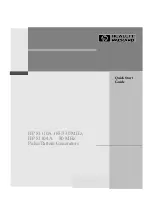
The high-voltage pulse and the logic output of the DUT must be measured by the user,
using suitable high-impedance oscilloscope probes. Coaxial cabling should not be
used, because it will introduce too much parasitic capacitance.
The AVRQ-4-B features front panel keyboard and adjust knob control of the output
pulse parameters along with a four line by 40-character backlit LCD display of the rise
time, pulse width, pulse delay, and pulse repetition frequency. The instrument includes
memory to store up to four complete instrument setups. The operator may use the front
panel or the computer interface to store a complete “snapshot” of all key instrument
settings, and recall this setup at a later time.
This instrument is intended for use in research, development, test and calibration
laboratories by qualified personnel.
7
Summary of Contents for AVRQ-4-B
Page 41: ...41...
Page 51: ...Bottom side 51...
Page 67: ...PCB 158R5 LOW VOLTAGE POWER SUPPLY...
Page 68: ...PCB 104G KEYPAD DISPLAY BOARD...
Page 69: ...PCB 228C OP AMPS AHV AND XHV UNITS...
Page 71: ...DUT WIRING ON STANDARD DAUGHTERBOARD PCB 267D...
Page 72: ...DUT WIRING ON SO 8 DAUGHTERBOARD PCB 314A...
Page 73: ...DUT WIRING ON WDIP16 DAUGHTERBOARD PCB 325A...
Page 75: ...PERFORMANCE CHECK SHEET 75...








































